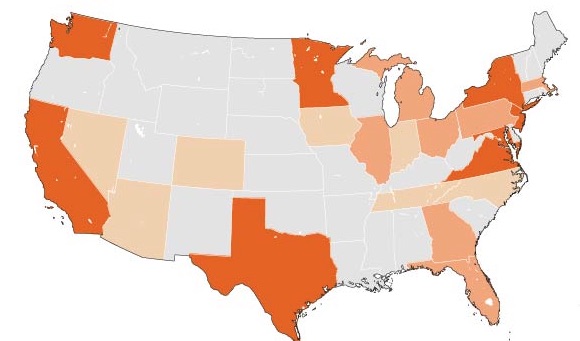Poverty and Inequality Pervasive in Two-Fifths of U.S. Counties
By looking at the intersection of poverty and inequality in local areas—and how this has changed over time—we can produce a more complete picture of U.S. economic health.

By looking at the intersection of poverty and inequality in local areas—and how this has changed over time—we can produce a more complete picture of U.S. economic health.
(2011) More young adults—especially men—are delaying marriage and staying in their parents' homes, according to new data from the U.S. Census Bureau. Between 2007 and 2011, the number of young adults living at home rose from 4.7 million to 5.9 million—contributing to an increase in "doubled-up" households since the onset of the recession.1

(2016) Although FGM/C is most prevalent in sub-Saharan Africa, global migration patterns have increased the risk of FGM/C among women and girls living in developed countries, including the United States, according to PRB analysis published February 2015.
(2002) In the United States, efforts to stop terrorism and restore economic growth have superseded the Social Security issue for the past several months. But the clock keeps ticking, and baby boomers are nearing retirement.
(2006) Although mental health is a sensitive topic the world over, the prevalence of mental illness and its consequences can no longer be overlooked. While mental disorders include a range of illnesses (such as anxiety, schizophrenia, and autism), depression is the most common and is pervasive worldwide.
(April 2006) Populations in developing countries will be aging rapidly in the coming decades: The number of older persons (those age 65 or older) in less developed countries is expected to increase from 249 million to 690 million between 2000 and 2030.